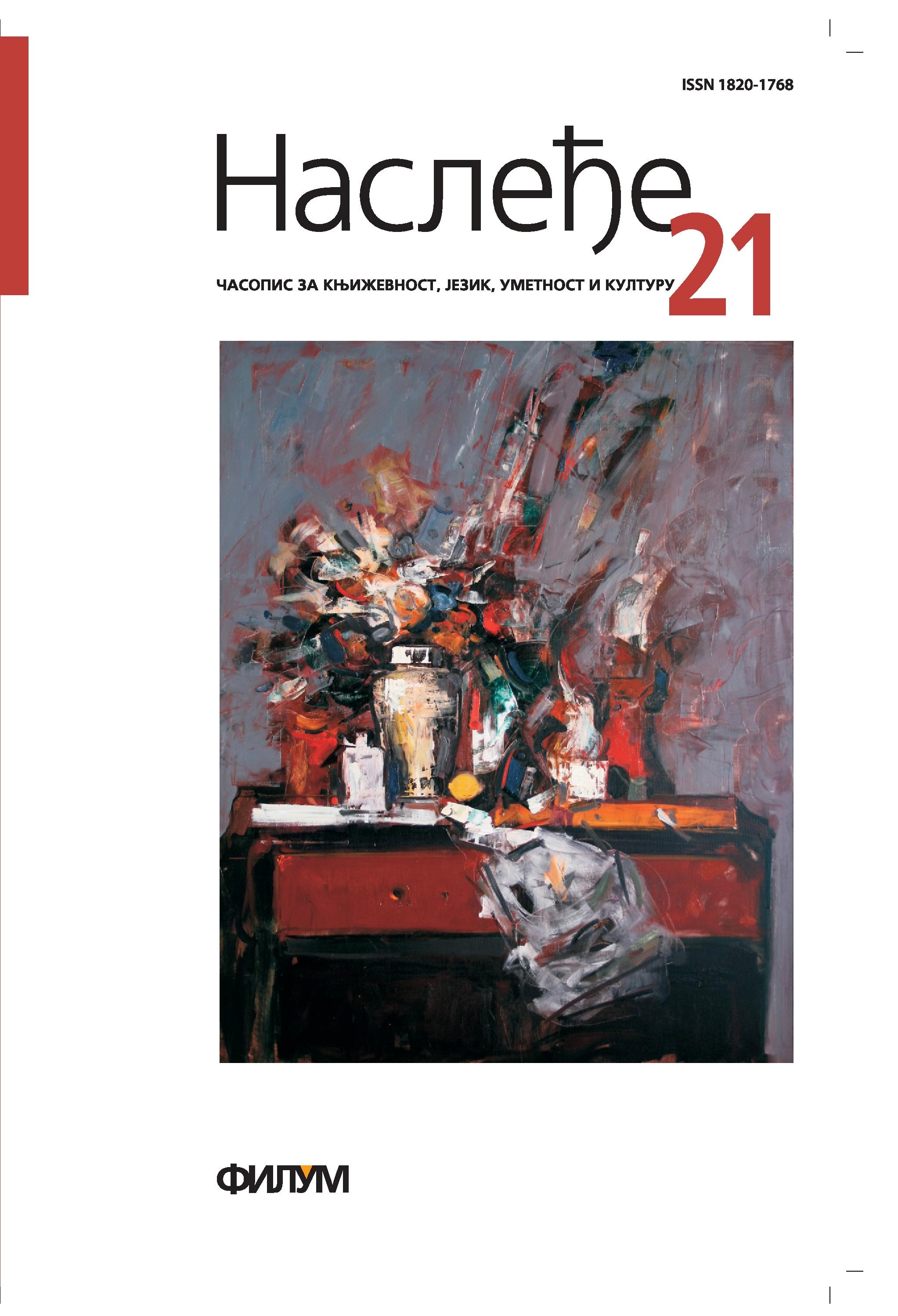THE PROBLEM OF IDENTITY IN THE DAMNED YARD BY IVO ANDRIĆ
Keywords:
indentity, myth, love, story, maskAbstract
The object of the paper is to examine closely different aspects of identity development in the novel The Damned Yard. Treating the problem of identity as the central point of the story, around which the development and actions of the characters, as well as the basic poetic principles are concentrated, the paper follows the path of identity searching concerning Andrić's heroes. The essential question of poetics and the story – identity – becomes the initial moment in opening the question of the very nature of myth, story, and finally love. The Damned Yard by Ivo Andric is presented as a work which authentically reflects modernist absence manifested through the chief markers of humanity. Andrić's protagonist, with the absolute mythological identification, feverishly wants to reach identity which is an impersonation of Sultan Džem. However, condemned to the unrealized love – in the poetics of novel the only right way for reaching the true identity – Ćamil gives the last try following the mythological concept of identity. Such identification is manifested as a failure and the final wreck to the young man from Smirna. Karadjoz is still the symbol of the half-completed identifications and of the awareness of the masks represented by such identities. That is the reason way in this hero we find one of the greatest acknowledgments which is the myth, story, and civil identity establishment, are condemned to failure.
References
Андрић 1976а: И. Андрић, „Разговор са Гојом“ у: Р. Вучковић, М. Первић, В. Стојић, П. Џаџић, Историја и легенда (есеји, огледи и чланци), Сарајево: Светлост, Загреб: Младост, Београд: Просвета, Љубљана: Државна заложба Словеније, Скопље: Мисла.
Андрић 1976б: И. Андрић, „О причи и причању“, у: Р. Вучковић, М. Первић, В. Стојић, П. Џаџић, Историја и легенда (есеји, огледи и чланци), Сарајево: Светлост, Загреб: Младост, Београд: Просвета, Љубљана: Државна заложба Словеније, Скопље: Мисла.
Андрић 1981: И. Андрић, Проклета авлија, Београд: Нолит.
Бошковић 2010: Д. Бошковић, „Рађање историје из несрећне љубави: Проклета авлија Иве Андрића“ у: Заблуде модернизма, Београд: Службени гласник.
Зизиулас 1995: Ј. Зизиулас, Од маске до личности, превод са грчког Митрополит Црногорско-приморски Амфилохије (Радовић), HΣYXIA.
Јерков 1999: А. Јерков, „Неизрецива мисао смрти и неименљиво у Проклетој авлији. Смисао Андрићеве поетике“, Београд: Свеске задужбине Иве Андрића, Свеска 15.
Еберхард 1997: Ј. Еберхард, „Смрт као тајна живота“, Градац, часопис за књижевност, уметност и културу, Број 124-125, Година 24.
Михаиловић Михиз 1977: Б. Михаиловић Михиз, „Читајући Проклету авлију“, у: Иво Андрић у свјетлу критике, Сарајево: Свјетлост.
Палавестра 1972: П. Палавестра, Послератна српска књижевност: 195-1970, Београд: Просвета.
Тартаља 1979: И. Тартаља, „Језгро приповедачеве естетике“ у: Антоније Исаковић (уредник), Зборник радова о Иви Андрићу, Београд: Српска академија наука и уметности.






